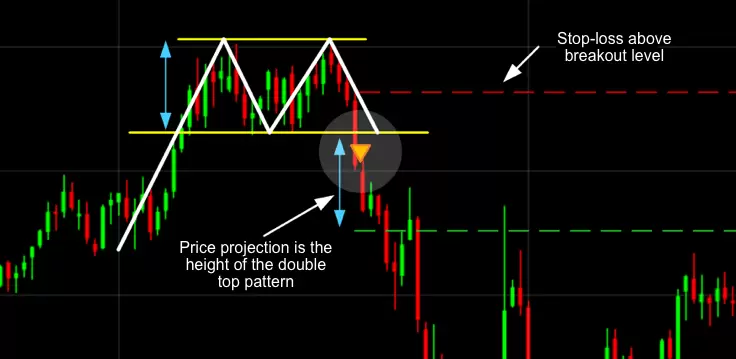The Ultimate Guide to Day Trading: Opportunities, Risks, and Strategies
Day trading has been one of the interesting and fast-paced ways one can invest in the capital market. Traders engage in buying and selling stocks before the end of the trading day. The primary objective remains closing all positions before market closure, thereby not opening oneself to overnight exposure to changing market conditions. Day trading is not about quick and easy money; it takes discipline, focus, and patience. Successful day traders exploit the price movements that occur in one trading session to reap large gains with a significant capital amount invested to generate modest price changes in very liquid stocks or indexes. Such risks and gains are pretty enormous, thus making day trading a very high-risk activity.
1. Advantages of Day Trading :
> Zero Overnight Risk
One of the primary advantages of day trading is avoiding overnight risk. By closing all positions before the end of the trading day, traders protect their portfolios from overnight events that can drastically affect stock prices. This eliminates the possibility of unexpected news wiping out profits overnight, a risk traditional long-term traders face.
> Increased Leverage
Day traders also enjoy reduced margin requirements, allowing them to control larger positions with less capital. This increased leverage amplifies the potential for profits as traders can now maximize returns on smaller price movements.
> Profit in Any Market Direction
Unlike long-term investors relying on bullish markets, day traders can profit in rising and falling markets. Therefore, by using strategies such as short-selling, they can take advantage of a declining stock price, making the day trading approach versatile, particularly in volatile or bearish markets.
> High Returns
The right skills and strategies can result in high returns from day trading. The learning curve is steep, but more experienced traders are able to develop the expertise to consistently make day trading profitable. Furthermore, day trading allows for flexibility, in which individuals can work independently, free of the constraints of a traditional workplace.
2. Risks Involved with Day Trading :
> Losses May be Huge
The same leverage that spikes profits can also multiply losses. A significant amount of loss is bound to be incurred by the day trader, especially during the initial stages. Novice traders often suffer massive losses because of a lack of experience and emotional control.
> Time and Attention Demands
It involves full dedication during market hours and vast study outside the trading hours. Traders must monitor markets, trends, technical indicators, and news continuously, making it one of the most demanding professions.
> Stress
Day trading can be very stressful due to its fast nature. Making quick decisions while tracking fast price movements and managing several trades at a go can lead to anxiety and burnout.
> Overtrading
Overtrading is one of the common pitfalls of novice traders. They take unnecessary risks or make too many trades in a day. This behaviour is based on emotions rather than analysis, and usually, results in losses.
> Borrowed Money Risks
Margin trading is the most common practice among day traders. This involves borrowing money from the brokers to enhance buying power. While it can add returns, it also enhances the risk of huge losses and even debt.
> Technological Challenges
Operational problems such as a power outage, software crash, or internet failure may have a severe impact on a trader's ability to make timely trades, thereby risking losses.
3. Day Trading Strategies :
> Scalping
Scalping involves generating small profits from minute changes in price. Traders execute many trades in one day, hoping to aggregate enough profit from many small gains. Scalping demands fast decisions, live feeds from the market, and a direct-access broker.
> Fading
This is a strategy of short-selling stocks after a rapid price increase, assuming that the stock is overbought and needs to pull back. Fading is quite risky but can be highly profitable for traders who are comfortable with uncertainty.
> Daily Pivots
This form of trading takes advantage of a stock's daily price fluctuation. The traders aim to buy at the LOD and sell at the HOD by using pivot points that give critical support and resistance levels.
> Momentum Trading
Momentum trading is riding the wave of a stock's price movement. Traders enter based on news releases or strong trending moves, expecting momentum to continue. The key to the strategy is the ability to determine when the trend is losing strength.
4. Top Tips for Aspiring Day Traders :
> Start small
Begin with limited capital and focus on a few stocks to avoid being overwhelmed.
> Have a plan
A solid trading plan with defined entry, exit, and risk management strategies is the only pathway to success.
> Investment in Education
Understanding market trends, technical analysis, and even the trading platforms is extremely important. Find time and resources to maintain continuous learning.
> Control of Emotions
Emotional control is the key. Resist impulsive decisions and do not deviate from your set trading plan.
> Use Technology
Reliable trading software, high-speed internet, and real-time market data are inevitable for effective day trading.
Day trading is a great source of financial gain, but it also involves high risks. Discipline, proper market knowledge, and stress management with loss are required to succeed in day trading. Through learning proven strategies and having a structured approach, aspirants can overcome the hurdles of day trading and tap into its potential rewards. Remember always to trade responsibly and only risk what you can afford to lose.









